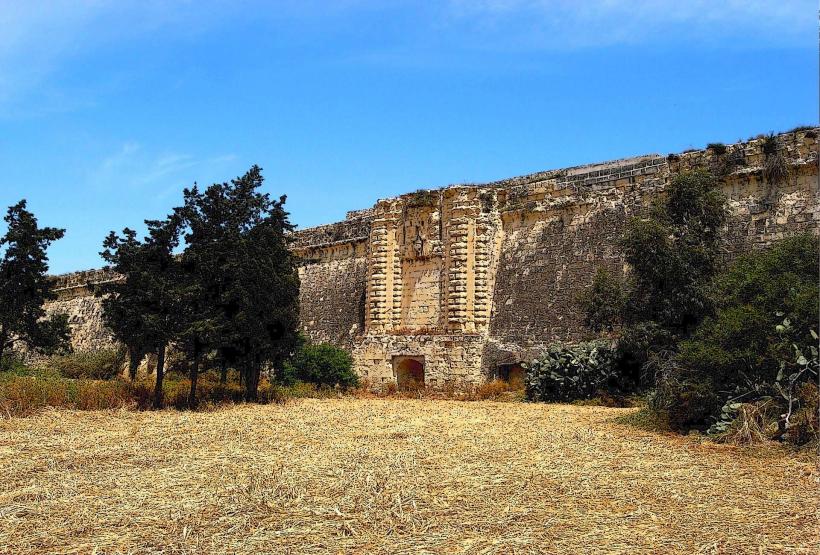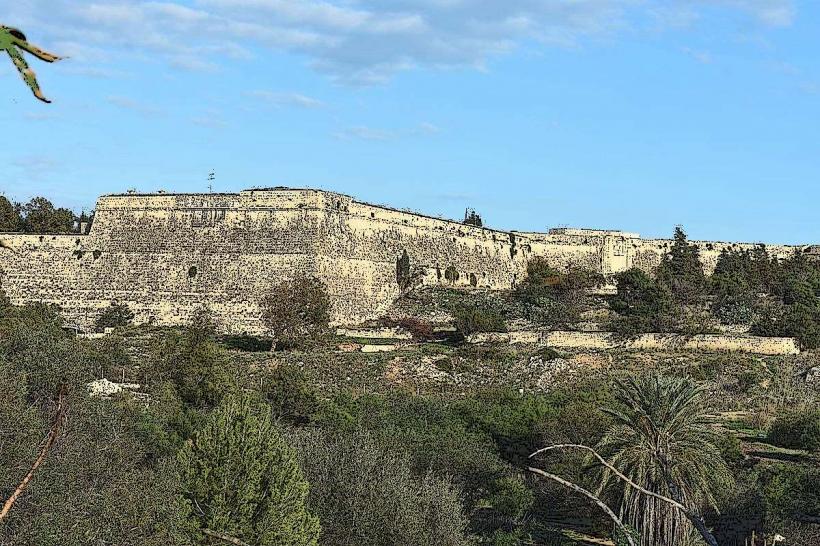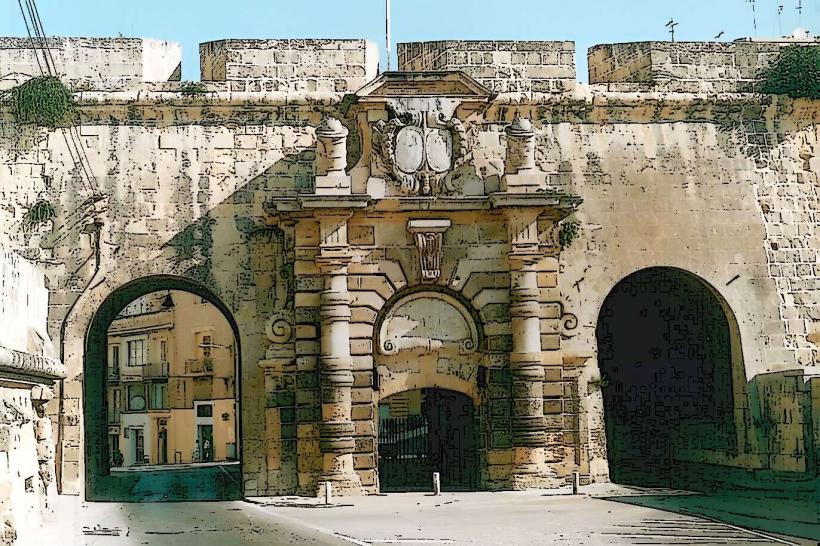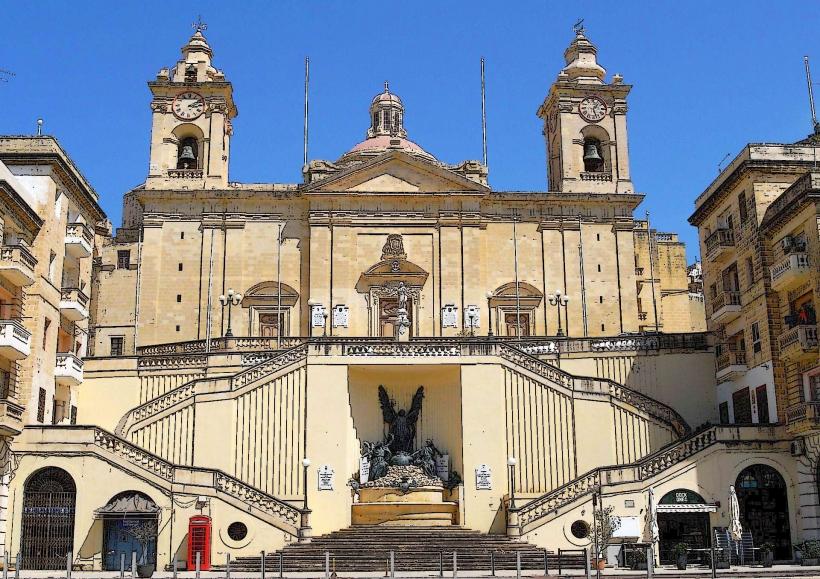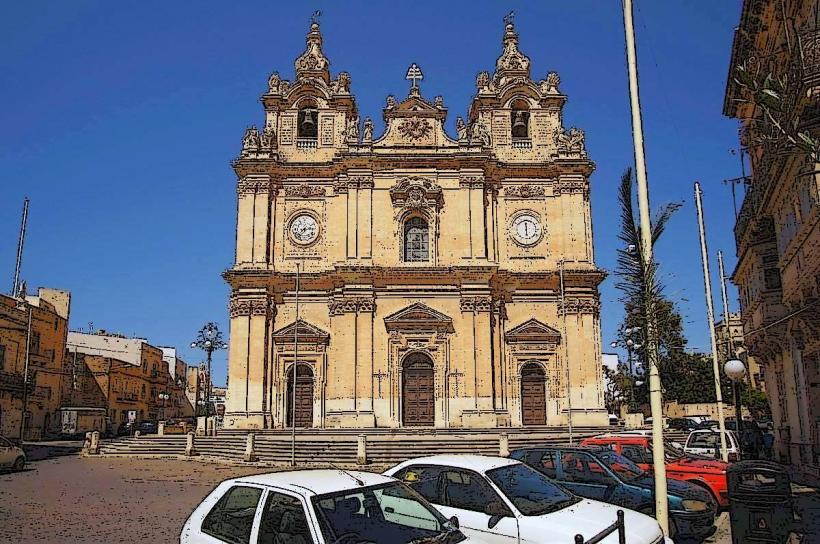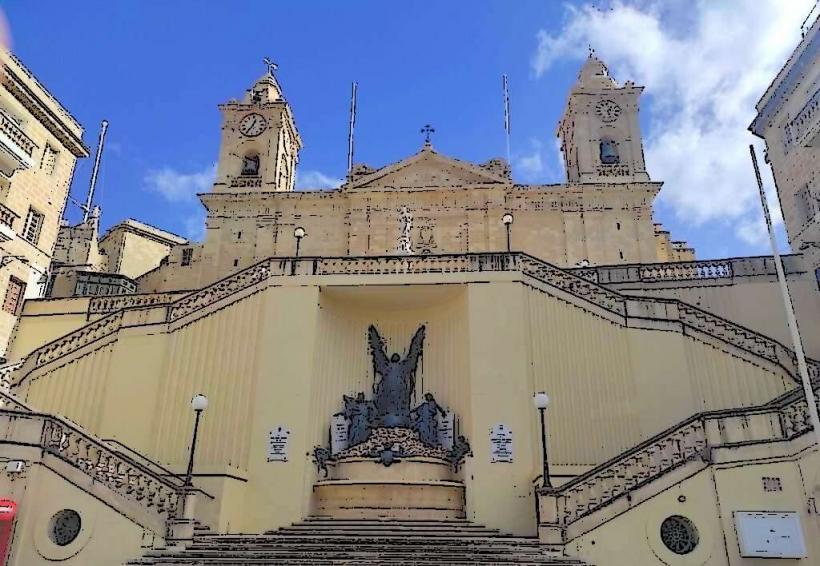Information
Landmark: Verdala GateCity: Cospicua
Country: Malta
Continent: Europe
Verdala Gate is a historic gate located in the city of Mdina, the old capital of Malta, within the vicinity of the Verdala Palace. This gate is part of the broader fortification system of Mdina, one of the most well-preserved medieval cities in Europe. Verdala Gate, while not as prominent as other entrances to Mdina, holds significance in Malta’s history due to its location, architectural style, and historical role.
Historical Background
Mdina and its Fortifications:
- Mdina, also known as the Silent City, has been the capital of Malta for over a thousand years, dating back to the Phoenician and Roman periods. Its fortifications, which include multiple gates and walls, were built and expanded throughout different historical eras, including the Norman, Arab, and Knights of St. John periods.
- Verdala Gate is one of the several gates through which access to Mdina is possible. Mdina’s fortifications were designed to protect the city from invaders, and Verdala Gate serves as one of the secondary entries to the city.
Verdala Palace and Its Significance:
- Verdala Gate is closely associated with Verdala Palace, which was originally built by the Knights of St. John in the 16th century. The palace, located on a hill just outside Mdina, was once the residence of the Knights’ Grand Master during the hot summer months. Later, it became the official residence of the President of Malta.
- The gate leads to this palace and the surrounding area, which is now part of the Buskett Gardens, a popular green area for both locals and tourists.
Architectural Features
Design and Style:
- The Verdala Gate features a simple yet functional design, typical of the military fortifications around Mdina. The gate is made from local limestone, a material common to Maltese fortifications, giving it a sturdy and lasting appearance.
- Unlike other more ornate gates in Mdina, such as the Main Gate (or Greek's Gate), the Verdala Gate is relatively modest in its decoration. It was designed more for utility than grandeur, reflecting its purpose in the town's defensive system.
Baroque Influence:
- The gate reflects the Baroque architectural style, which was predominant in Malta during the period when the Knights of St. John governed the island. The baroque influence is evident in the aesthetic details and fortified nature of the gate, which was built to integrate seamlessly into Mdina's fortifications.
- Its location within the city walls is strategic, as it offers access to the Verdala Palace and connects the palace to the wider landscape, including the lush countryside of Buskett Gardens.
Cultural and Social Significance
Strategic Location:
- Verdala Gate has a strategic significance, providing access to Verdala Palace and serving as an important point of entry for the surrounding rural area. The gate played a role in controlling movement into and out of the city, particularly for visitors to the palace and the surrounding gardens.
- The area around Verdala Gate is part of the countryside of Malta, an area that was historically used for agriculture and leisure by the Knights of St. John. Today, it remains an area of natural beauty, often frequented by locals for walks, picnics, and nature excursions.
Presidential Residence:
- Since the 19th century, Verdala Palace has served as the official residence of the President of Malta, making the gate an important entry point for state functions and official visits.
- Although the palace is not open to the public, the surrounding gardens, including the Verdala Gate, are sometimes part of cultural events and official ceremonies.
Tourism and Accessibility
Proximity to Other Attractions:
- Verdala Gate is located just outside Mdina’s city walls, within close proximity to Buskett Gardens, one of the island’s largest public gardens. The gardens are a popular attraction for those seeking to enjoy the island's natural beauty, offering lush greenery, walking paths, and picnic areas. The gate’s location makes it an important point of access to this tranquil area.
- It is also near other landmarks, such as Mdina’s Main Gate, the Mdina Dungeons, and St. Paul’s Cathedral, all of which are within a short walk from Verdala Gate. Visitors to Mdina can use this gate to explore the palace and gardens while enjoying the beautiful surrounding countryside.
Access for Visitors:
- Verdala Gate is accessible by foot from Mdina and public transport, with regular routes connecting Mdina to other parts of Malta, including Valletta and Rabat.
- While the Verdala Palace itself is not open to the public, the surrounding area can be explored, and visitors can enjoy the views from the gate and the peaceful atmosphere of the nearby gardens.
Conclusion
The Verdala Gate is a key historical and architectural feature of Mdina, Malta’s old capital. It serves as the entrance to Verdala Palace and the surrounding Buskett Gardens, areas that have strong ties to Malta’s medieval and Knights of St. John heritage. While relatively modest compared to other gates in Mdina, the Verdala Gate holds significance for its location, its role in the island’s defense system, and its association with the official residence of the President of Malta. For visitors to Mdina, it provides an opportunity to experience Malta’s history, architecture, and natural beauty in one serene and picturesque location.

